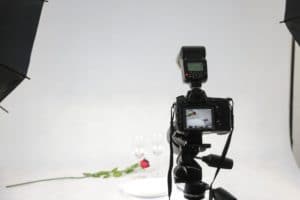
Artificial and natural light both has its advantages and disadvantages. Some photographers choose entirely one over the other, and some apply both to their setups. However, it is important for photographers to know the basics of artificial and natural light settings so that they will be able to produce the desired results.
In this post, we will be discussing the two main types of lighting and which one best suits the photography work you have in hand.
What is Artificial Lighting?
Artificial lighting are preset that involve the use of studio lamps, reflectors, and pin lights and other tools to aid in providing the desired lighting once and the image is captured. Artificial lighting usually involves more time for preparation and setup. You may also need a backdrop, a private studio, along with the lighting devices to produce the best results.
Pros of Artificial Lighting
Highly customizable
You can easily pick what kind and how much artificial light you need depending on you or your client’s preference. With the use of you lighting devices, you can change the angle and direction of the light, intensity, size, and even the color of light that you need. You can also use special filters to help you create unique lighting presets for different kinds of subjects.
Reliable
Artificial lighting is highly reliable as long as you have a power source. For event photography, you just need to have battery-operated lighting set to carry around when the situation calls for it. It is very reliable as how it is customizable.
Cons of Artificial Lighting
Expensive equipment
Artificial lighting involves investments in equipment. Professional photography requires the use of a lot of gadgets and tools that you need to create visually engaging photos through the play of light. If you are a beginner and would prefer not to shell out too many funds, you may want to invest wisely in lighting equipment.
Time Consuming Setup
A lot of artificial lighting equipment require some time to be set up. That is why photographers and videographers need to be at the set early to prepare their equipment for a shoot. If you are somebody who wants to get work done fast, it is either you choose to work in a team who can set up the equipment for you, or make use of natural lighting.
What Works Best in Artificial Lighting?
There are several themes that work best in artificial lighting, especially if you want to create a certain look. Here are some examples:
Product shoots
If you are advertising a brand or a product through the use of images, you may need to use a lot of artificial lighting equipment. Most professional product images we see in magazines are shot professionally with artificial lighting against a clear background. This is to minimize photo edits and to produce the best quality of product possible.
Indoor setups
Although there are some exceptions to the rule, indoor setups usually lack natural light sources. Consequently, there is a need to make use of artificial lighting in these kinds of shoots. And example would be those who set up an indoor studio for their photography business.
What is Natural Lighting?
Natural lighting is less complicated and involves only the use of daylight for your photographs. Most natural light photography is done outdoors, or indoors with several windows and openings to accommodate sunlight.
Pros of Natural Lighting
Less complicated
Natural lighting is ideal for on-the-go photographers who want less fuss on their work. Since this light source falls naturally on the features of your subject, it involves lesser work to make good photographs. Additionally, you do not need to use filters as the sunrise and sunset can make good color variations depending on what you want to achieve.
Inexpensive
What could be better than spending less? Natural lighting photography will be free as long as sunlight is free. If you are a beginner at photography, you may want to utilize natural lighting as your source just to understand how shadow and light come into play for you to create good images.
Cons of Natural Lighting
Time Bound
For natural lighting photography, you need to have a schedule. You cannot pick any time of the day to shoot, and you have to work as fast and efficient as possible. Once the sun sets, you may not be able to produce quality work.
Lesser Control
The light doesn’t adjust to you; you have to adjust to the light. This is one thing you have to remember when working with natural lighting. Either you can change your position, angle or pick the right amount of shading to achieve the desired results.
What Works Best with Natural Lighting?
Natural lighting also has its forte depending on the style and theme you want to grasp for your photos.
Travel Shots
Travel shots, especially those involving a natural landscape do not need artificial lighting. You just have to pick a perfect time of the day to get just the right amount of light for your subject.
Mood Shots
If you want to evoke a certain mood, such as happiness, tranquility, loneliness, gloominess, or being sentimental, you can make use of natural light in any subject that you have. Natural light can help you tell a story, depending on what time of the day you choose to shoot.
Weigh the pros and cons, understand what is best for your subject, and think about your budget. Photography is all about expressing yourself and making the best use of the resources available around you.
About the Author
D. Scott Carruthers is a successful photographer based in Anaheim, California. He gained recognition after his work was featured in local publications. He covered events of celebrities and public icons throughout his career.